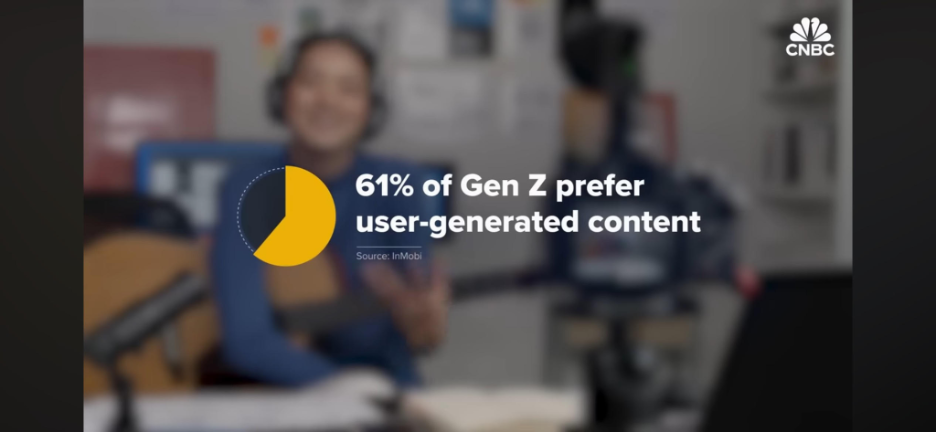

Last updated on

If you’ve been following discussions in the SEO community lately, you’ve probably observed a resurgence of interest in “brand marketing.”
With insights from recent Google disclosures, many SEO experts now emphasize the importance of establishing a robust digital presence for achieving SEO success.
And as a side note, water… remains wet.
Setting aside leaks, floods, and drips, there are compelling reasons why prioritizing brand marketing should be your focus at this moment.
I won’t be giving you the typical “5 reasons to focus on your brand in 2024” list—it wouldn’t suit my style.
Instead, I’d like to make a case by examining the current state of the web ecosystem.
My focus isn’t on the “benefits” of brand marketing, but on why the ecosystem itself necessitates this approach.
It’s less about the tangible rewards of brand focus and more about how failing to prioritize it will leave you out of sync with your audience.
The internet has become more conversational, and this trend is only accelerating.
One of my key points is that content evolves incredibly quickly. What we consume, how we consume it, and our expectations are all rapidly changing, often in ways we don’t fully appreciate.
A classic example is the first televised US presidential debate in 1960 between John F. Kennedy and Richard Nixon.
Radio listeners thought Nixon won, while TV viewers believed Kennedy was the victor.
Why? Nixon appeared pale, had a five o’clock shadow, and avoided direct eye contact with the camera, whereas Kennedy looked confident and composed. This illustrates how different mediums influence perception.
The evolution of content has far-reaching, often underestimated consequences.
We are currently at a pivotal moment in the history of content, much like in 1960.
Consider how TV commercials have changed over time. What once resonated now seems campy or even spammy.
Imagine Coca-Cola trying to sell its product today using its 1980s Max Headroom “Catch the Wave” commercial. Or trying to market a sugar-infused breakfast cereal to kids using a TV ad from the 1950s. It wouldn’t work.
It’s not that those commercials are “bad”; it’s that the language and tone that resonate with audiences change over time.
This is a straightforward concept—except when it comes to web content. For some reason, we expect web content and its consumption trends to remain static forever.
We tend to write the same kind of content in the same way and resist any changes.
But this doesn’t change the reality.
The content we create often fails to connect with users. It’s not positioned correctly, the tone is off, and the goals behind its creation are distorted. There are many issues, and they all start with content not being conversational.
In fact, Google should stop saying, “Write for your users,” and start saying, “Have conversations with your users.”
We all believe we’re “writing for our users”—after all, who else are we trying to attract and convert?
It’s easy to convince yourself that you’re “writing for your users.” It’s much harder to convince yourself that you’re engaging in a dialogue with them—which is what I believe Google truly intends.
So, what do I mean by content not being conversational, and how do I know it’s a problem?
We tend to write the same kind of content in the same way and resist any changes.
But this doesn’t change the reality.
The content we create often fails to connect with users. It’s not positioned correctly, the tone is off, and the goals behind its creation are distorted. There are many issues, and they all start with content not being conversational.
In fact, Google should stop saying, “Write for your users,” and start saying, “Have conversations with your users.”
We all believe we’re “writing for our users”—after all, who else are we trying to attract and convert?
It’s easy to convince yourself that you’re “writing for your users.” It’s much harder to convince yourself that you’re engaging in a dialogue with them—which is what I believe Google truly intends.
So, what do I mean by content not being conversational, and how do I know it’s a problem?

You often see this in PPC ads:

No nuance. It’s the best accounting software, and I’m supposed to trust that without any qualification.
This kind of copy might have worked in the past, but it no longer resonates (and if it does now, it won’t for much longer).
This approach doesn’t engage users in a meaningful way; it treats them like idiots.
Today’s average web user is far more savvy, mature, and skeptical than before.
Brands are starting to face consequences for not adopting a more genuine approach.
Greenwashing.
This is when a company claims to be more environmentally conscious than it truly is—essentially spin and PR nonsense.
Companies once thought they could deceive unsuspecting users, but people are now more savvy and can spot brands falsely positioning themselves as “green.”
You can’t get away with it anymore (and you never should have tried). The only effective approach is being genuine.
If your product isn’t actually “the best,” don’t claim it is. In fact, recognize that there’s no definitive “best,” “ultimate,” or “fastest.” There is only what meets users’ needs in specific ways. That’s a fancy way of saying “addressing pain points.”
Being genuine means talking to your audience, not at them. It’s about having a dialogue with them.
Using traditional marketing language is akin to greenwashing—it’s insincere and applies to your informational content as well.
Nothing illustrates this better than the declining effectiveness of influencer marketing. Studies show that younger users are increasingly less likely to purchase something solely because an influencer promotes it.
Influencer marketing, as we commonly know it, is a facade pretending not to be one. Do you really think Patrick Mahomes eats Chicken McNuggets or prefers State Farm for his insurance?
Influencer marketing is just the digital version of celebrities in TV commercials.
Do you believe that a random TikTok influencer genuinely prefers Capital One or even realizes it’s not a geographical reference?
While the concept of “influencers” seemed promising initially, it’s fundamentally unsustainable because it’s inherently deceptive. (For the record, “community” marketing is different. While it might involve “influencers” within a community, it is far more genuine.)
People have caught on to the idea that an influencer being paid to endorse a product doesn’t reflect reality (much like social media influencers themselves, to be honest).
A 2023 Drum article cites a study indicating that over 80% of users say a brand’s use of influencers does not affect them one way or the other.
There are other studies that suggest influencer marketing can be effective. I agree, but with qualifications. Simply paying an influencer to praise your brand is not authentic.
There are genuine ways to work with communities and influential individuals within them. This tends to be more effective with micro or nano influencers.
This is why there’s a growing trend toward working with micro or nano influencers who can offer a more authentic experience for audiences—a trend highlighted by HubSpot’s 2024 social media marketing report, among others.
It’s not rocket science. Everyone knows influencers are paid to say what they do, making their endorsements relatively meaningless in most cases.
This trend underscores how much savvier today’s web users are compared to the past. People are increasingly trusting themselves over influencers (DTA, right?).
Numerous studies show that users are gravitating toward user-generated content. CNBC reports that “61% of Gen Z prefer user-generated content.”

Which brings me to my next point.
Up until now, I’ve focused on the nature of commercial content and the demand for conversational content.
The same principle applies to informational content, though for slightly different reasons.
While informational content on the web may not be as opaque as commercial content, it is often sterile and stoic.
By sterile and stoic, I mean content that doesn’t actually engage with the user. It breaks a topic down into subtopics and presents the information without considering the readers’ context.
No one has more data on emerging content consumption trends than Google, with its ability to analyze user behavior in various ways. What has Google done in response to these trends for both informational and commercial queries? It has filled the search engine results page (SERP) with user-generated content.
The proliferation of Reddit on the SERP highlights the current state of informational content.
Just look at the Google SERP and you’ll see numerous Reddit results, from various SERP features to organic results, indicating a shift toward more conversational and context-aware content.
While SEO pros may be upset about the abundance of Reddit results (and rightfully so, in my opinion), we have no one to blame but ourselves.
Do you really think Google wants to rank Reddit here, there, and everywhere? Personally, I don’t. I believe Google would prefer to rank a diverse set of experience-based content.
Regardless of how you feel about Reddit on the SERP, users’ preference for content created by other users tells you one thing: People want to move past facades and engage with transparent content that speaks to them, not at them.
Consider content like office dress codes. In the 1950s (at least in the US), it was unheard of to show up to the office in anything but a suit and tie or a dress.
Just as professional dress codes have become less formal, so has content.
Both trends are relatively recent developments. In fact, office dress codes are a good representation of “where we are” in terms of the formality of content consumption.
While traditional marketing language might have been acceptable and effective a few years ago, it’s no longer as effective. As society becomes less formal, our communication follows suit. This informality has naturally extended to web content.
The proliferation of AI-written content highlights this issue even more. As everything starts to sound similar, having a distinct, authentic voice becomes increasingly important. As AI continues to advance, users will crave content that feels genuinely “real.”
Much like paid influencers, AI-written content lacks an authentic experience. Users are increasingly seeking genuine interactions.
Some might argue, “But AI can be conversational!”
It’s important not to mistake AI’s ability to engage in informal replies for an actual conversation or dialogue with a real person. I have relatives who can talk endlessly while I simply nod—this is not what I would consider a true conversation. Similarly, inputting prompts and receiving responses from an AI language model is not a real dialogue. (It feels absurd to even need to clarify this.)
True conversation involves empathy and a meaningful exchange between two distinct entities. That’s what I mean by “conversational.” It requires understanding and addressing the user’s needs and emotions.
AI falls short here—it lacks the capacity for empathy and true understanding. As a result, it creates content that is inherently devoid of connection. This limitation is driving a growing demand for more genuine, conversational content.
The rise of AI-generated content will naturally lead to a stronger desire for authentic, connective experiences. People have an inherent need for real connections and dislike content that feels empty.
Given the growing frustration with monotonous and impersonal content, combined with the facade often present in commercial web content and the rise of AI, we are likely to see a shift in user preferences towards more meaningful, conversational content.
What does this have to do with brand marketing? We’re almost there—just one more step.
Users who crave genuine web experiences are increasingly averse to feeling like they’re being sold to. Skepticism and distrust arise when people feel pressured to make a purchase.
Instead of being enticed by catchy headlines or persuaded by influencers, people want the freedom to make their own choices.
They’re seeking genuine advice and accurate information to address their real needs, and they prefer to use that information on their own terms.
Google’s addition of “Experience” to its E-E-A-T criteria underscores this shift. The search engine now emphasizes evaluating pages from the perspective of user experience because it understands this is what people value.
When users prioritize authentic information and experiences, they’re least receptive to coercion or feeling pushed into a decision.
The pursuit of authenticity in experience-based information centers on enabling users to make well-informed, independent decisions.
Attempts to drive clicks and conversions through aggressive marketing tactics and manipulative language are fundamentally opposed to this approach. Similarly, using deceptive marketing strategies or creating a façade, like traditional influencer promotions, contradicts this mindset.
The days of having Michael Jordan leap over Spike Lee in a commercial to sell shoes are over. Such tactics are unrealistic and inauthentic—they’re just fantasy.
Similarly, claiming to offer a “new,” “revolutionary,” or “ultimate” solution doesn’t resonate as authentic. It’s perceived as hyperbole and insincere.
To truly engage users, you need to cultivate an environment where they feel empowered and free from pressure.
So how do you drive growth and revenue while maintaining user autonomy and avoiding unsolicited tactics?
That’s where brand marketing comes in.
I anticipate strong resistance to what I’m about to say.
Many companies will likely reject my perspective, especially in the SaaS sector, where my views might seem almost radical (startup SaaS brands often lag behind consumer trends).
If user autonomy is the cornerstone of the ecosystem, then being top of mind is the glue that binds your marketing efforts.
The key to avoiding the push for clicks and conversions is to let users approach you on their own terms and at their own pace.
Being top of mind is more crucial than ever, as it aligns with the psychological profile driving modern web experiences.
There is a direct correlation between consumer demand for autonomy in the buying journey and effective brand marketing. To resonate with how users think and feel about the web, it’s essential to build the right associations and positioning with genuine differentiation.
In more performance-focused terms, direct traffic represents the future of the web. The goal is to attract users to come to you on their own terms.
It benefits both sides. You become less dependent on unpredictable platform algorithms—whether social or search, which often seem chaotic right now. At the same time, your users won’t feel like they’re being oversold or pushed into clicking and converting.
Instead, they come to you because they discovered you, appreciated what they saw or heard, and chose to explore the possibility of buying from you at their own pace.
Moreover, branding fosters a genuine connection. In an AI-driven world, the need for human connection will only grow. Your brand represents the intersection of your identity and your audience’s.
It creates an associative bond, helping your audience recognize that there’s a real “you” behind the product or service.
This is the true power of branding in the modern web.
What kind of branding fosters autonomy? Education-focused brand marketing.
Brand marketing can mean various things to different people. Often, in the digital realm, it involves promoting the value of your product across the web.
I’m not suggesting that this approach lacks value or shouldn’t be used. However, this is more accurately described as product marketing dressed up as brand marketing.
Instead, 90% of your brand marketing should focus on more than just pushing your product. It should be about cultivating an identity—whether for a product, service, or company—and using that identity to craft messaging that positions the product, service, or company in a specific way, thereby creating a genuine connection with your target audience.
The associations you create and the sentiment you build around your brand should ideally lead your audience to view you as a relevant solution. However, it’s crucial to remember that these connections are associative.
The branding approach I’m advocating focuses on adding genuine value to your audience’s lives. Notice that I didn’t say offering value through your product or service—value should come first, and then your product can provide additional benefits.
You can’t effectively promote a product under the guise of “branding” without first establishing a brand that demonstrates a genuine concern for the user’s needs and context, independent of any immediate “ask” like making a purchase.
You wouldn’t ask your neighbor for a cup of sugar before first greeting them and inquiring about their well-being.
Similarly, you shouldn’t expect consumers to open their wallets before establishing a real, meaningful connection with them.
Yet, this is often the reality of the internet today.
I’m not suggesting that you should avoid using performance-based marketing tactics to boost your reach and sales. Performance-based marketing can be a powerful driver of growth and revenue.
What I’m advocating is integrating performance marketing within a broader branding strategy. It’s essential to strike a balance between the two, though this balance may not always be equal.
I’ll delve into how to balance brand and performance in more detail another time.
Original news from SearchEngineJournal